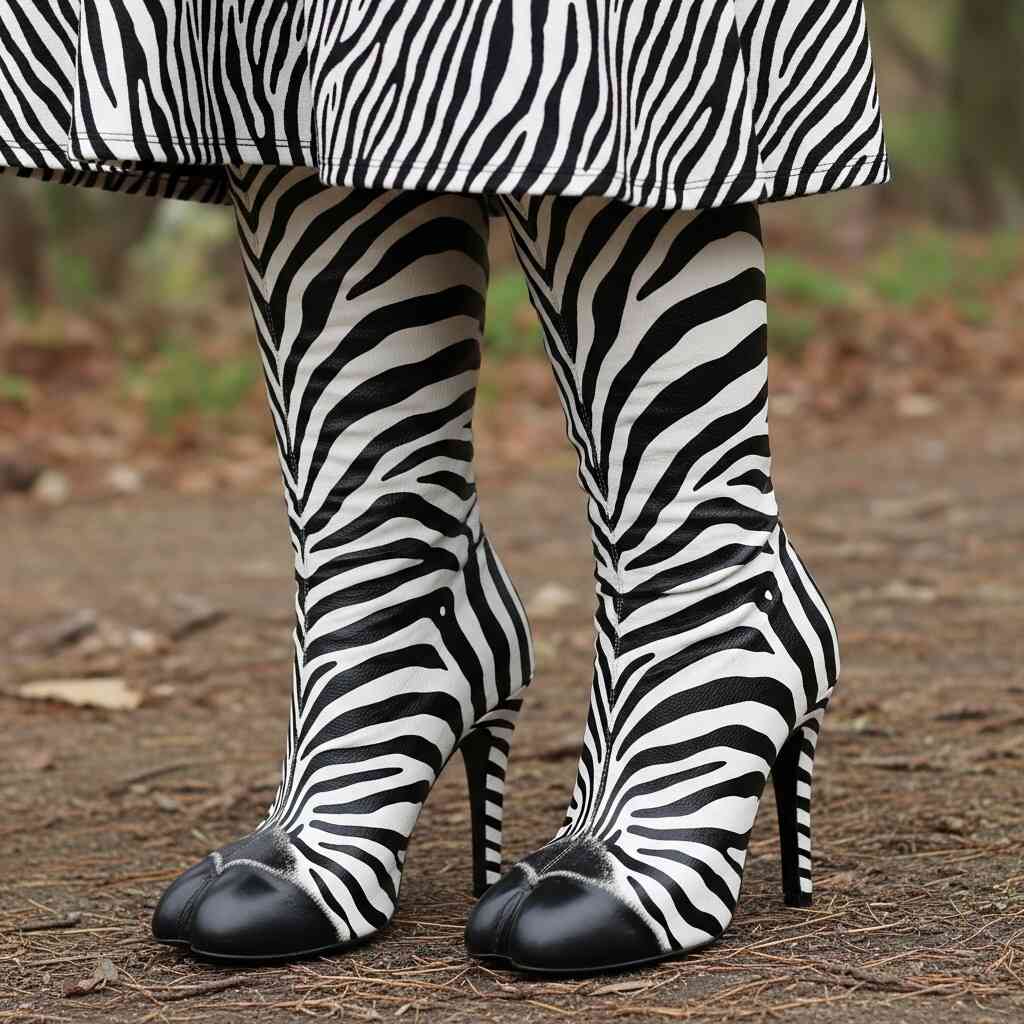In an age dominated by electric and gas-powered lawn mowers, the image of a person leisurely pushing a sleek machine across the grass is commonplace. However, long before these modern devices became household staples, lawn care was a much more manual—and in some cases, animal-assisted—endeavor. Among the most fascinating relics of early lawn maintenance technology are horse lawn mowers , a unique and often overlooked chapter in the evolution of landscape care.
The term “horse lawn mower” may conjure images of literal horses pulling mechanical contraptions across fields, and indeed, that’s precisely what they were. These machines represent a time when human ingenuity met agricultural necessity, blending engineering with animal labor to create tools that could maintain large expanses of land. Though now considered obsolete for practical use, horse-drawn mowers offer valuable insight into how past generations approached the task of lawn management.
This article explores the origins, mechanics, cultural significance, and legacy of horse lawn mowers . By delving into this niche yet historically rich subject, we can better understand not only the technological progression of lawn care but also the broader societal shifts that influenced it. From their development in the 19th century to their eventual replacement by mechanized alternatives, horse lawn mowers tell a story of innovation, adaptation, and tradition.

The Origins of Horse Lawn Mowers
Early Lawn Care Practices
Before the advent of specialized lawn mowers, maintaining grassy areas was a labor-intensive process. In rural settings, livestock such as sheep or goats were often used to graze on overgrown fields, naturally keeping the grass short. In more formal gardens and estates, servants would manually cut the grass using scythes or shears—a method that required both skill and endurance.
These practices worked reasonably well for small-scale or informal landscapes, but as the 18th and 19th centuries progressed, there was a growing demand for neatly trimmed lawns, especially among the affluent classes in Europe and North America. The rise of ornamental gardening and the desire for manicured grounds led to the need for more efficient cutting methods.
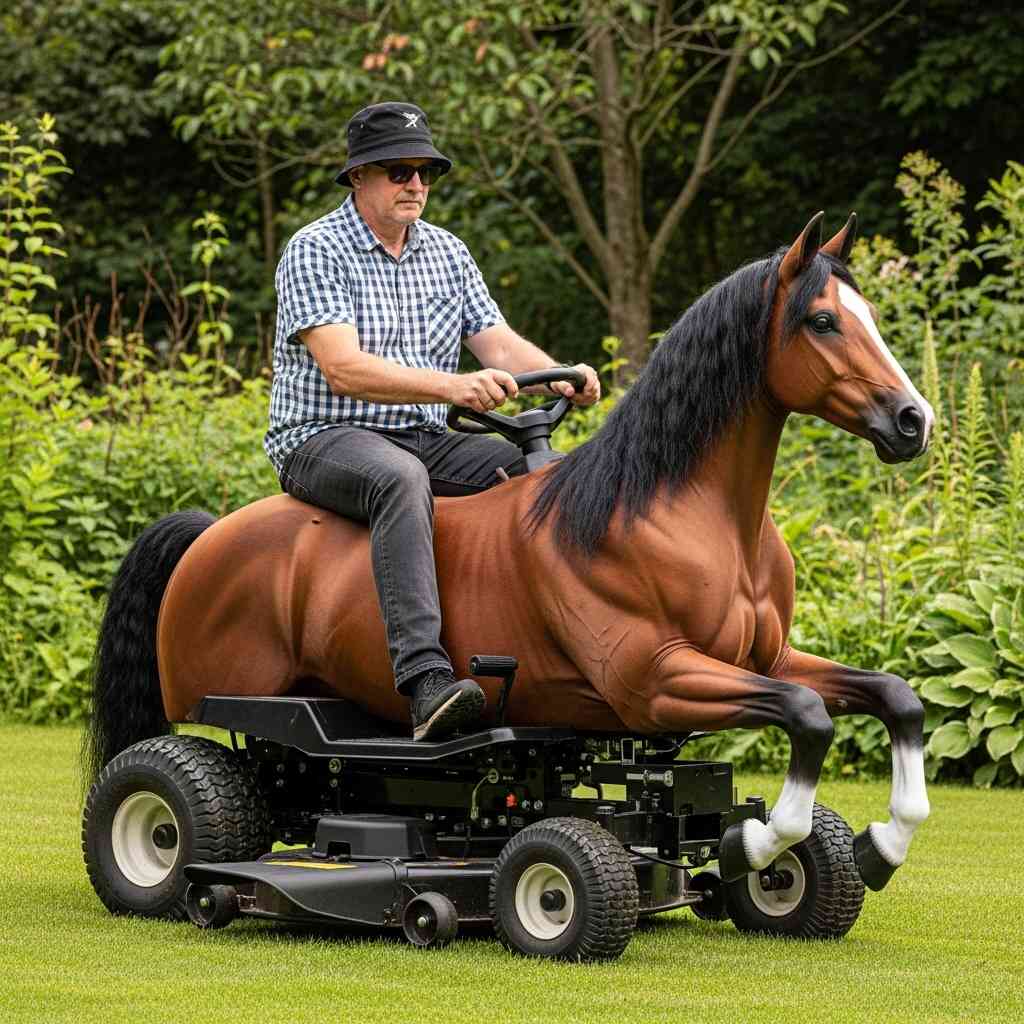
The Birth of Mechanical Lawn Mowers
The first significant breakthrough came in 1830 when English engineer Edwin Budding patented the first mechanical lawn mower. This device, a reel-type mower pushed by hand, revolutionized lawn maintenance by offering a consistent, clean cut without the need for skilled labor. While this invention marked a turning point, it was still limited in scope—primarily suited for small to medium-sized lawns.
As landowners began managing larger properties, including parks and estate grounds, the need arose for equipment that could cover greater distances and handle heavier workloads. This demand paved the way for the development of horse-drawn lawn mowers , which combined the efficiency of mechanical cutting with the power of animal traction.

The Rise of Horse-Drawn Solutions
By the mid-to-late 19th century, manufacturers began producing larger, more robust mowers designed to be pulled by horses. These machines were typically wider than their hand-pushed counterparts and featured multiple cutting reels or blades, allowing them to cover more ground in a single pass. The integration of harness-compatible attachments enabled farmers and groundskeepers to pull these mowers behind one or more horses, significantly increasing productivity.
Horse lawn mowers quickly gained popularity among those who maintained expansive green spaces. They offered a middle ground between the physical exertion of manual mowing and the cost and complexity of emerging steam-powered machinery. For many landowners, especially those in agrarian societies, horse-drawn mowers represented the perfect balance of utility and affordability.
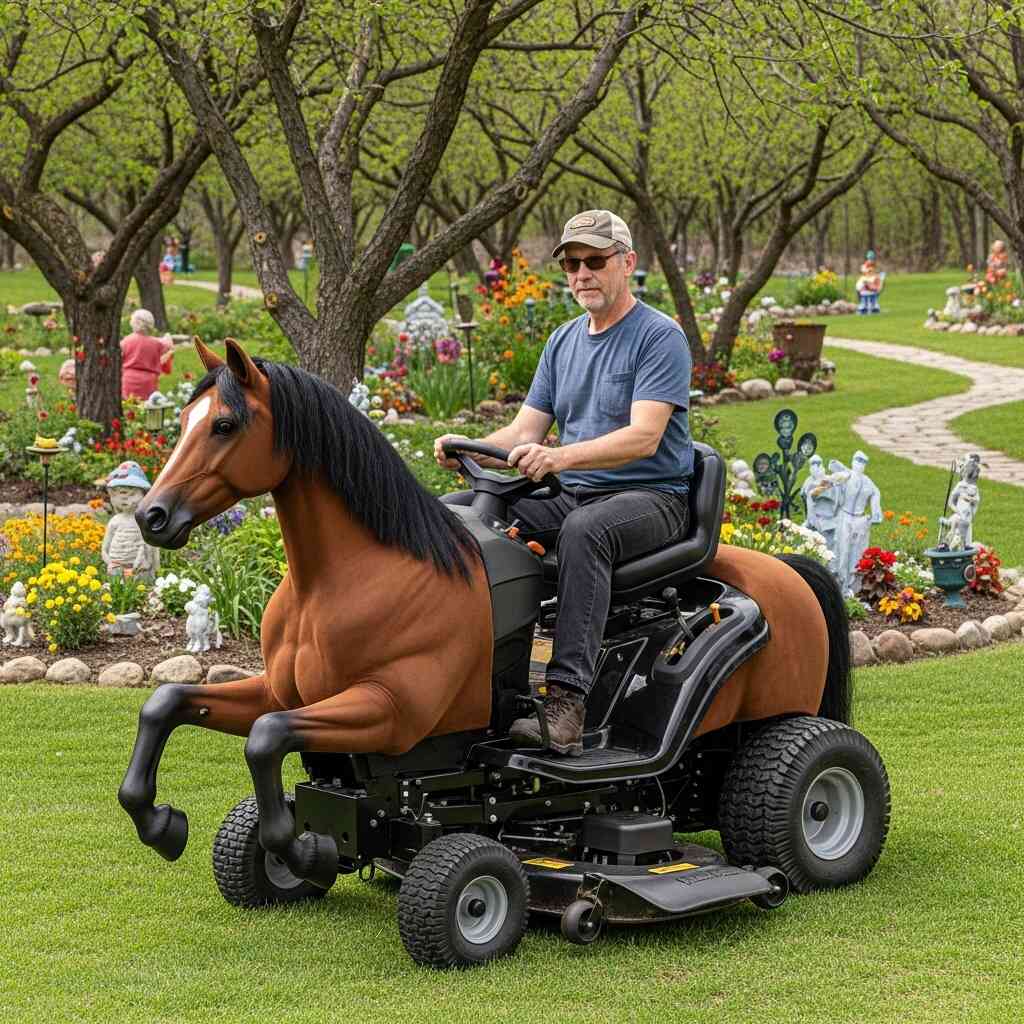
How Horse Lawn Mowers Worked
Design and Construction
Horse lawn mowers were typically constructed with durability in mind. Made from iron and steel, these machines were built to withstand the rigors of outdoor use. The frame was sturdy, often mounted on two or four wheels, depending on the model and intended terrain. The wheels were usually large and wide-spaced to provide stability and reduce soil compaction.
At the heart of the mower was the cutting mechanism, which varied slightly depending on the manufacturer and era. Most models employed a series of rotating blades or reels that sliced the grass as the machine moved forward. Some advanced versions included adjustable height settings, allowing users to control the length of the cut based on seasonal needs or aesthetic preferences.
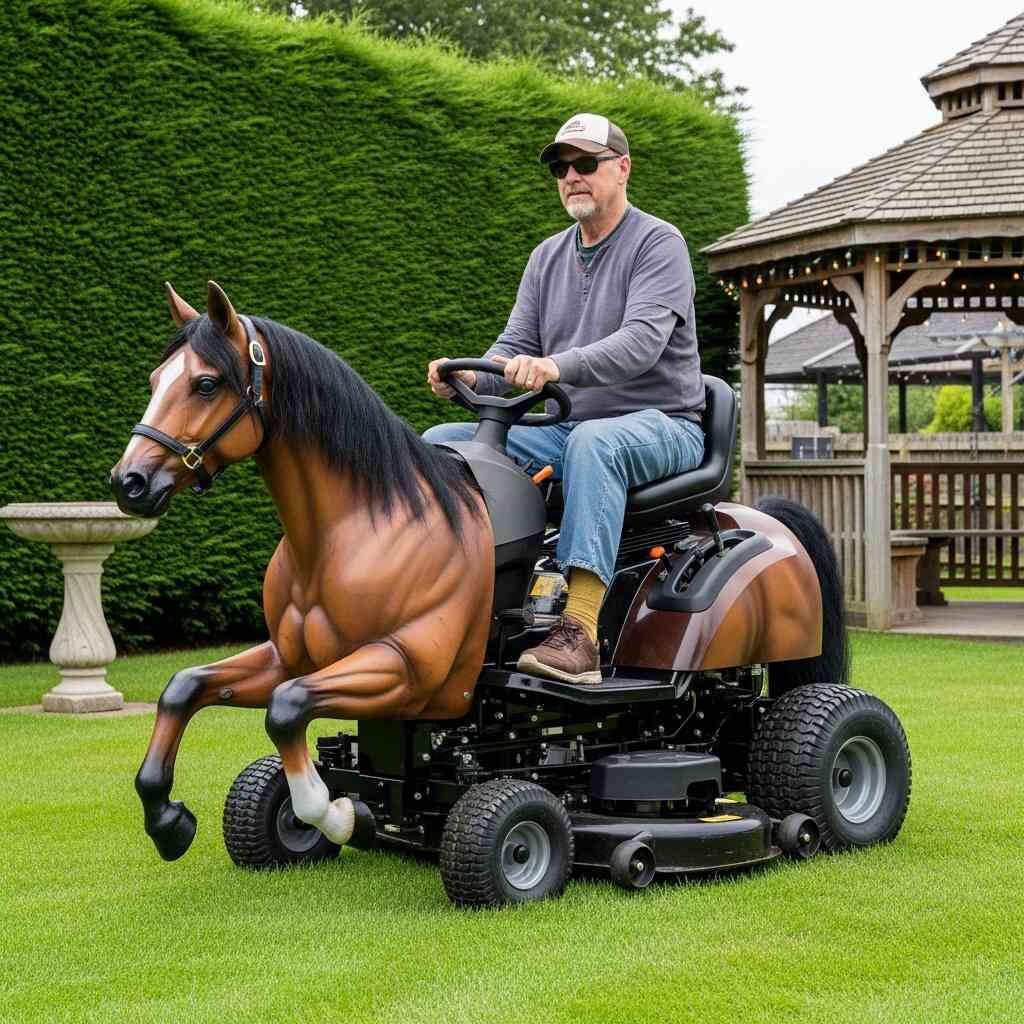
Operation and Use
Operating a horse lawn mower required coordination between the handler and the animal. Typically, the mower was hitched to a single horse or a pair, depending on the size and weight of the machine. As the horse(s) walked forward, the movement turned the cutting blades via a system of gears and belts connected to the wheels. This ensured that the mower only operated while in motion, preventing accidental damage when stationary.
Handlers had to guide the animals carefully to ensure even coverage and avoid missing spots. Steering was often accomplished through reins or levers attached to the mower itself. Some models included seats for the operator, allowing them to ride alongside the machine rather than walk behind it.
Despite being animal-powered, these mowers required regular maintenance. Bearings needed lubrication, blades had to be sharpened, and the overall structure had to be checked for wear and tear. Given the investment involved in both the machine and the horse, proper upkeep was essential for long-term usability.
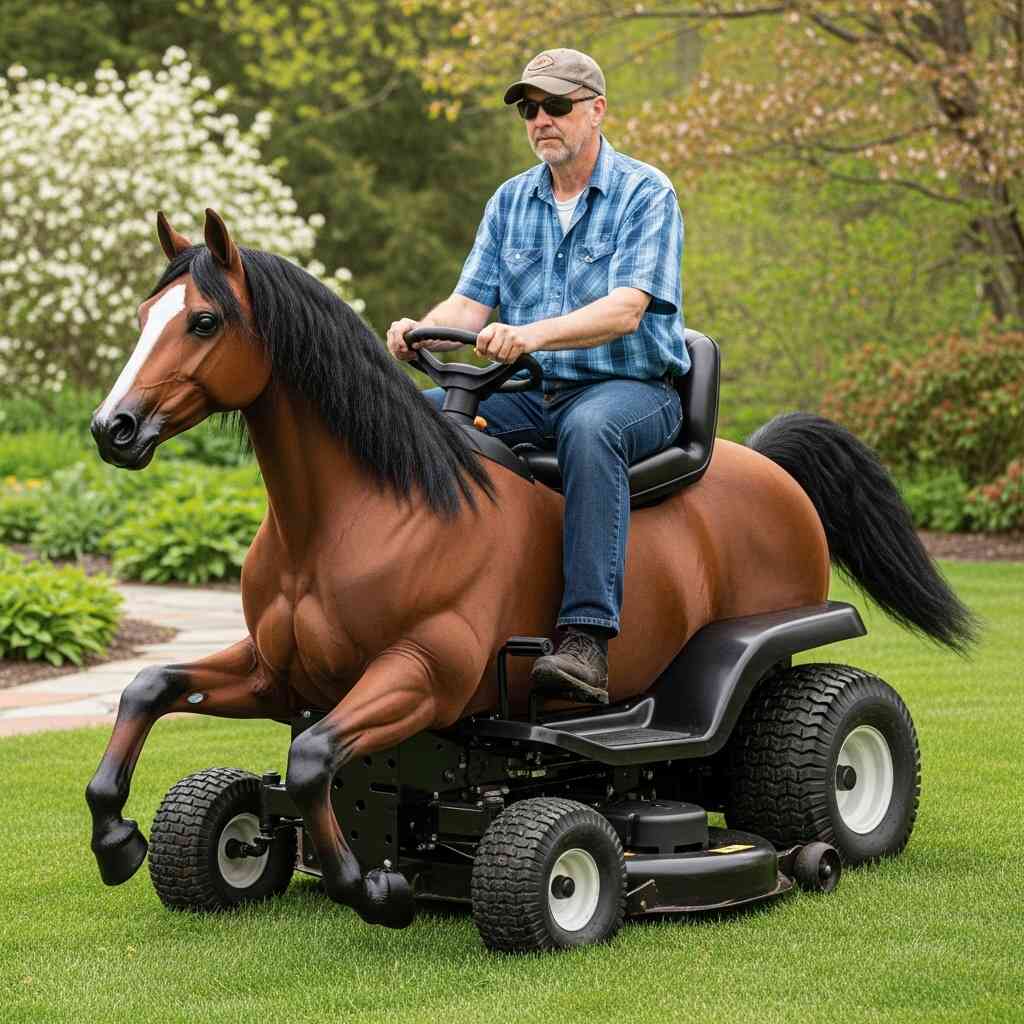
Advantages Over Manual Methods
Compared to earlier methods like scything or hand-pushed mowers, horse-drawn mowers offered several key advantages:
- Increased Efficiency : One horse could easily cover the same area in a fraction of the time it would take a person pushing a smaller mower.
- Consistency : The mechanical nature of the blades provided a more uniform cut than manual techniques, resulting in a neater appearance.
- Reduced Labor Intensity : Using a horse reduced the physical strain on workers, making it possible to maintain larger lawns without exhausting manpower.
These benefits made horse lawn mowers particularly popular among estate managers, park keepers, and agricultural workers tasked with maintaining vast stretches of grassland.
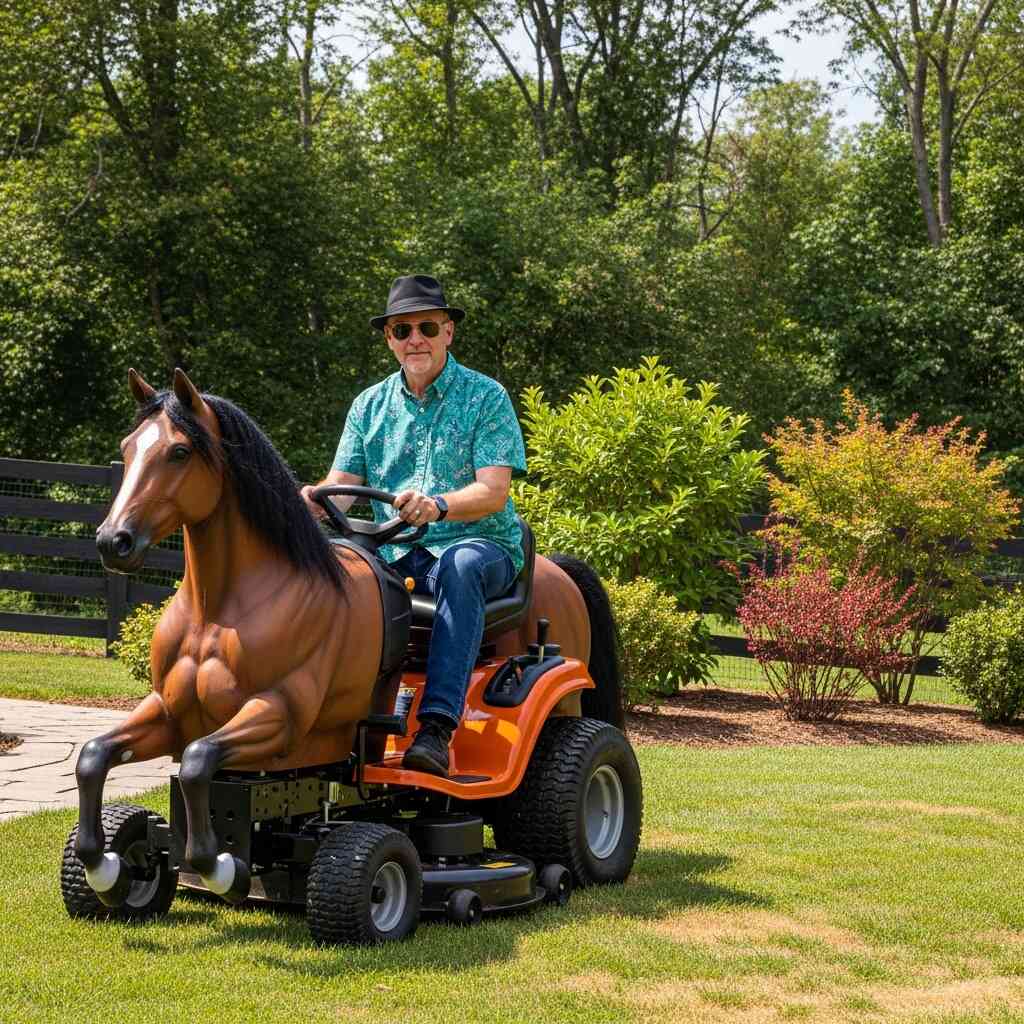
Cultural and Historical Significance
A Reflection of Agricultural Innovation
The development and adoption of horse lawn mowers reflect broader trends in agricultural and industrial innovation during the 19th century. At a time when mechanization was transforming farming and land management, these mowers symbolized the merging of traditional animal labor with emerging technologies. They were part of a larger movement toward efficiency and precision in agriculture, where machines began to augment—or even replace—manual tasks.
In many ways, horse lawn mowers served as a transitional phase between purely manual lawn care and fully mechanized solutions. They demonstrated that automation did not necessarily require complex engines or electricity; instead, existing resources like draft animals could be harnessed to achieve greater productivity.
Symbolism in Landscape Aesthetics
Beyond their functional role, horse lawn mowers played a part in shaping the aesthetics of formal landscapes. Well-maintained lawns became a hallmark of wealth and status, particularly in Victorian England and colonial America. The ability to regularly mow large expanses of grass signified not only affluence but also a commitment to order and beauty.
Using a horse-drawn mower added an element of spectacle to lawn maintenance. The sight of a finely groomed horse pulling a gleaming machine across a manicured lawn was both practical and picturesque. It reinforced ideals of harmony between man, nature, and industry—an aesthetic sensibility that defined much of the period’s landscaping philosophy.
Role in Rural and Urban Landscapes
While initially associated with grand estates, horse lawn mowers found applications in a variety of settings. Public parks, university campuses, golf courses, and even municipal grounds adopted these machines to maintain cleanliness and accessibility. In rural communities, they were invaluable for keeping village greens and churchyards tidy, contributing to a sense of communal pride.
Their versatility made them suitable for both flat, open fields and gently undulating terrain. Unlike later motorized mowers, which sometimes struggled with uneven ground, horse-drawn models could navigate slopes and rough patches with relative ease, thanks to the natural agility of the animals pulling them.
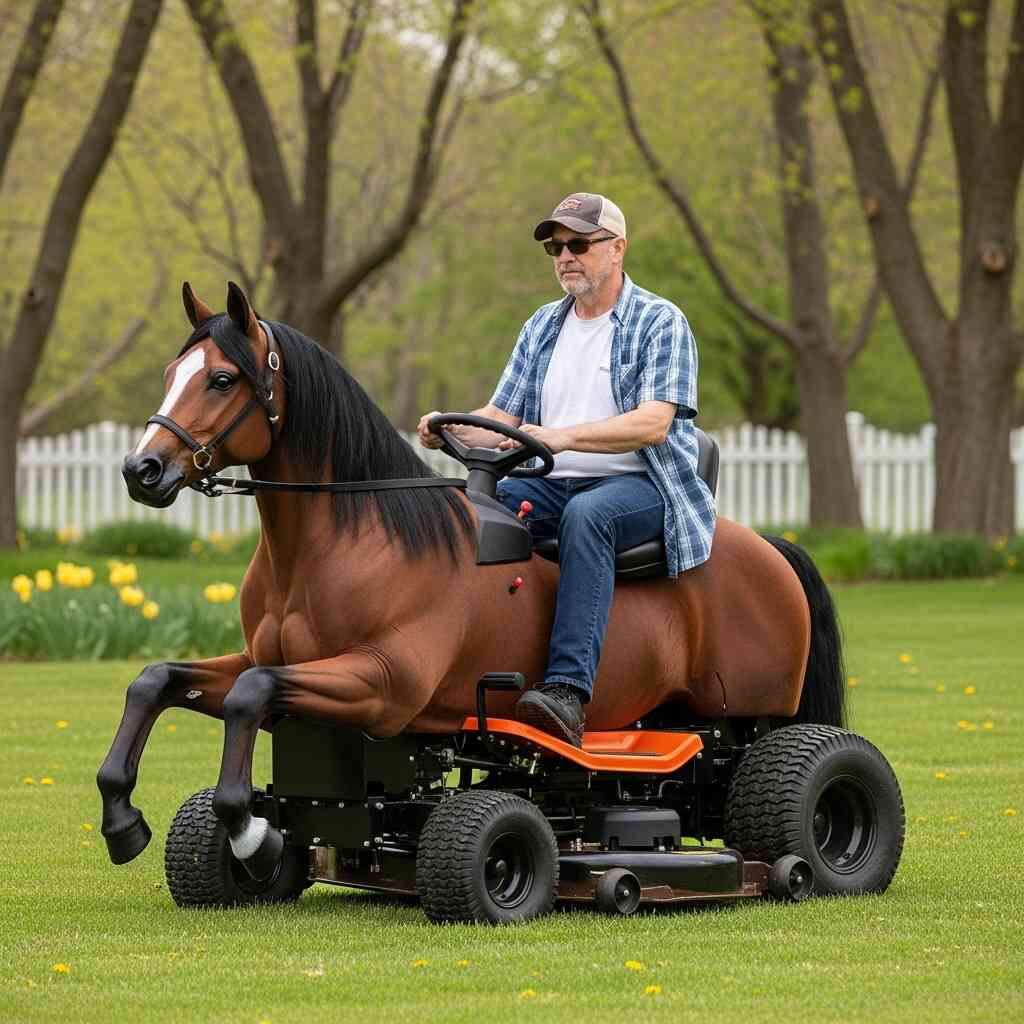
Legacy and Preservation
Decline with the Rise of Motorized Equipment
The widespread use of horse lawn mowers began to decline in the early 20th century with the introduction of gasoline-powered tractors and self-propelled mowers. These new machines offered greater speed, independence from animal labor, and improved maneuverability. As internal combustion engines became more reliable and affordable, the reliance on horses diminished, leading to the gradual obsolescence of horse-drawn mowers.
By the mid-20th century, most professional landscapers and property owners had transitioned to motorized equipment. The last vestiges of horse-drawn mowing were largely confined to hobbyists, historical reenactments, and preservation societies dedicated to maintaining vintage agricultural tools.
Preservation Efforts and Historical Interest
Despite their disappearance from mainstream use, horse lawn mowers have not been entirely forgotten. Museums, agricultural fairs, and heritage organizations often showcase these machines as examples of early mechanical ingenuity. Collectors seek out rare or well-preserved models, restoring them to working condition as a tribute to the craftsmanship of the past.
Some enthusiasts even continue to use horse-drawn mowers for demonstration purposes, offering hands-on experiences that allow people to witness firsthand how these machines functioned. These efforts serve both educational and nostalgic purposes, preserving a tangible link to a bygone era of lawn care.
Influence on Modern Lawn Maintenance
Interestingly, the principles underlying horse lawn mowers—mechanical cutting, efficient blade systems, and the pursuit of neatness—continue to influence modern lawn care technology. Contemporary reel mowers, push mowers, and even robotic lawn mowers owe a debt to the innovations pioneered by early mechanical designs.
Moreover, the idea of integrating animal power into sustainable land management has seen a resurgence among eco-conscious gardeners and small-scale farmers. While not widely practiced today, some individuals advocate for the return of animal-assisted tools as a low-impact alternative to fossil-fuel-based equipment.
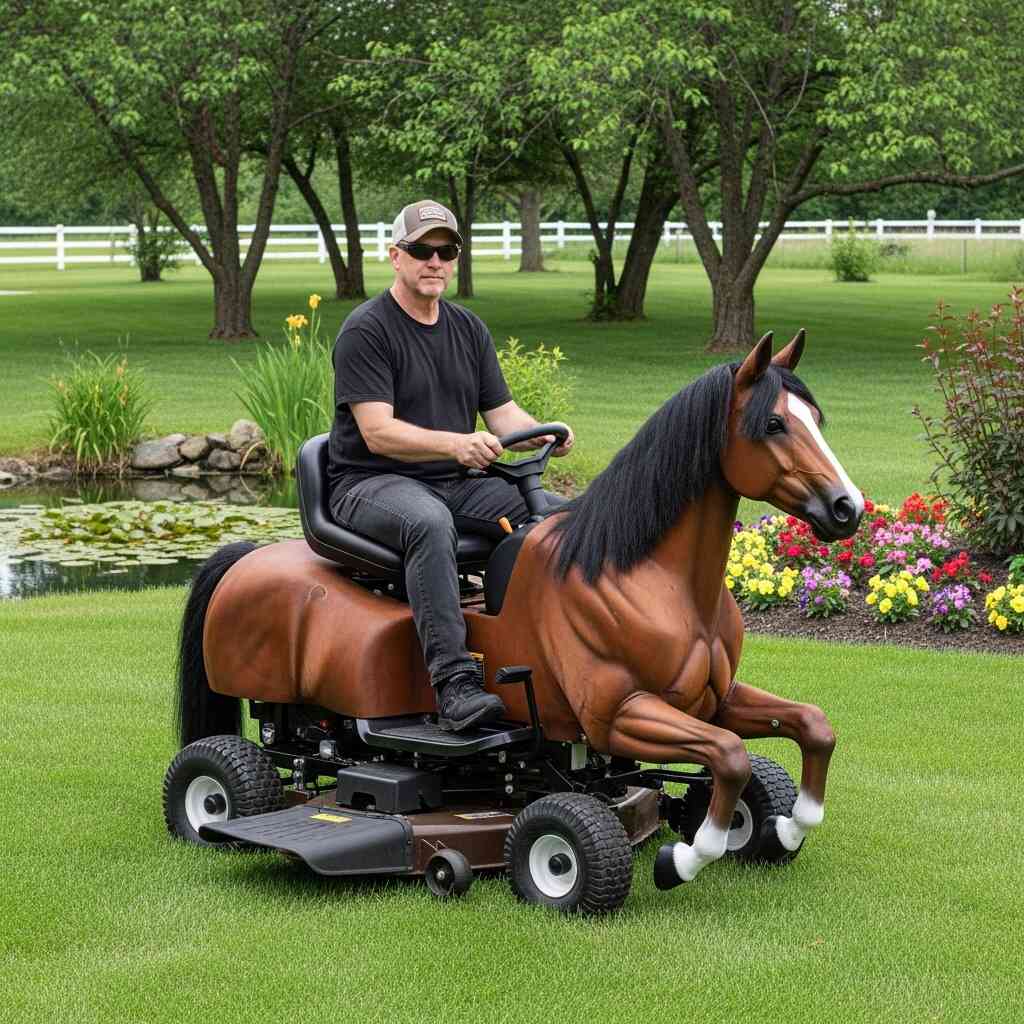
Conclusion
The story of horse lawn mowers is one of innovation, adaptation, and cultural transformation. These machines bridged the gap between manual labor and mechanized efficiency, embodying the spirit of progress that characterized the 19th century. Though no longer in common use, they remain a testament to human creativity and our enduring relationship with the land.
From their humble beginnings as experimental tools to their role in shaping the aesthetics of formal landscapes, horse lawn mowers hold a special place in the history of lawn care. Their legacy lives on not just in museums and private collections, but also in the ongoing pursuit of effective, sustainable methods of maintaining green spaces.
As we look back on this chapter of technological history, we gain a deeper appreciation for the ingenuity of past generations. In every turn of the wheel and slice of the blade, the horse lawn mower tells a story of progress—one that continues to inspire and inform our approach to the natural world around us.




